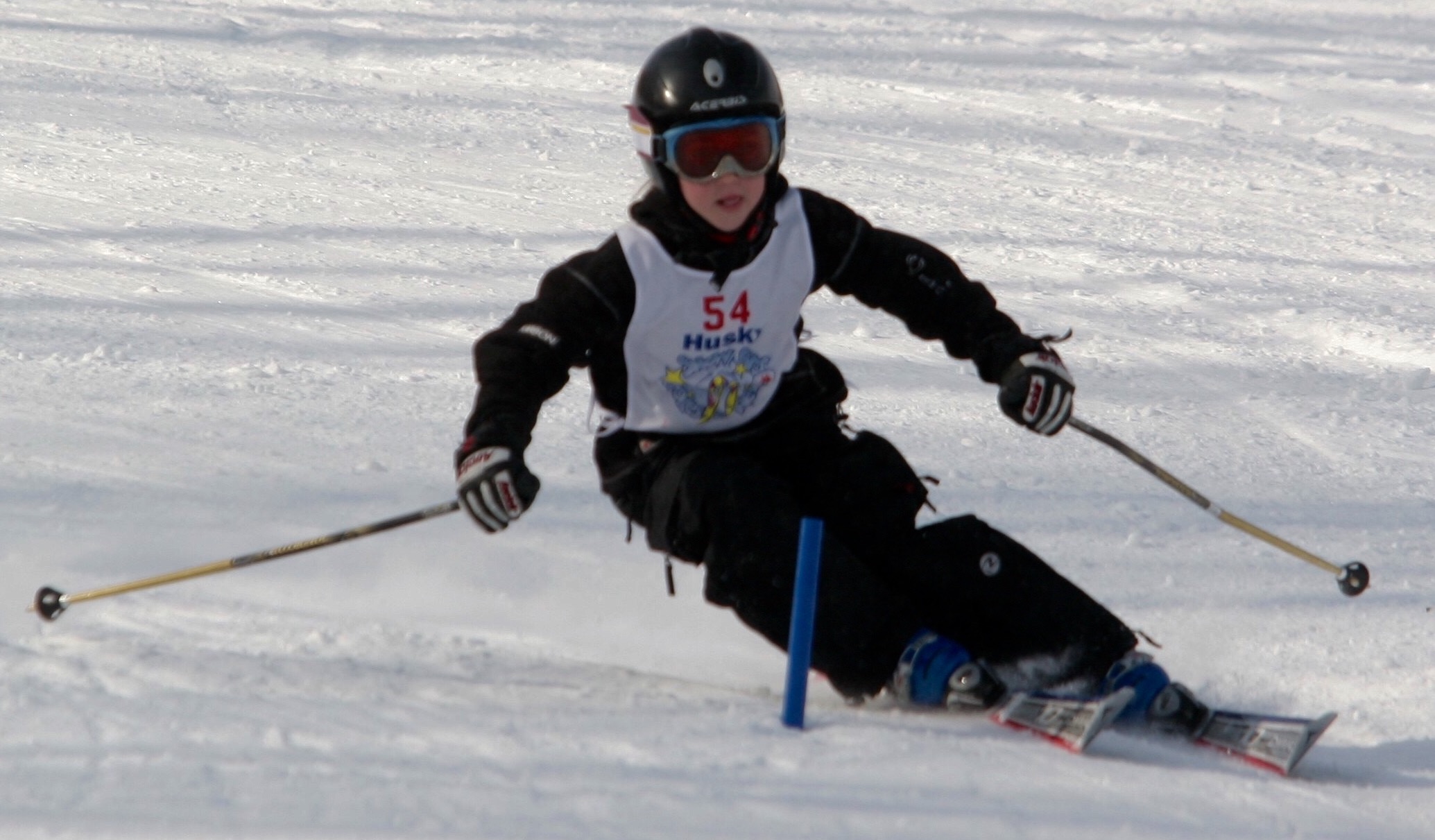Learn to Train
LEARN THE SPORT
Once a wide range of fundamental movement skills has been acquired, participants progress into the Learn to Train stage leading to understanding basic rules, tactics and strategy and refinement of ski racing specific skills. The primary focus in the learn to train stage is to develop solid technical skill execution in all situations and environments at varying speeds. Ski racers begin to understand the use of dynamic, athletic turns in the different training environments to gain or maintain speed. In this stage, skiers are becoming ski racers and working on consolidation of their foundational movement and technical skiing skills in structured and unstructured environments. Create intrinsic motivation to become better ski racers through skill competitions. The focus on this stage is not on individual results, it is on providing a wide variety of experiences that fit the individual athletes challenge zone to enhance athlete confidence and skiing skill acquisition.
- Boys 9 -12
- Girls 8 - 11
- Club Level
- Local & Zone racing
- Limited provincial racing
- Stage ends with start of adolescent growth period

Key Concepts
Ski racers participate in local club races exposing ski racers to all disciplines of ski racing including speed elements, dual/team and ski cross kombi events. Ski racers are beginning to understand the tactics involved in ski racing as they learn more about the sport of ski racing in a fun and playful environment that promotes self-discovery.
Opportunities to participate in multiple types of events focused on skill development and retention is highly encouraged. Competitions are inclusive, fun and skill based. At the end of the Learn to Train stage, participants may choose to progress towards becoming more competitive in the Train to Train stage.- Ski racers are still in the discovery stage while they continue to develop and consolidate their fundamental movement and skiing skills.
- Ski racers are introduced to deliberate practice and begin to develop their understanding of tactics and strategy in a formalized ski racing environment along with a continued emphasis on skiing skill development.
- During this stage, a ski racers coordination of movement becomes more consistent in a variety of environments both on and off-snow as they consolidate their fundamental skiing skills.
- Ski racers should participate in Snow Stars Levels 3 – 5 skill evaluations on a regular basis.
- In the winter months, ski racers should strive to attain as many days on snow as possible by participating in a structured ski club three days per week and skiing with parents as often as possible to increase mileage.
- Ski racers are encouraged to ski from the ski area opening day to closing day each season and participate in one to two short summer camps on-snow.
- Ski racers should always strive to achieve 180 minutes of physical activity per day with 60 of those minutes spent completing some vigorous physical activity. Parents should limit screen time.
- Ski racers are encouraged to complete a warmup that includes movement preparation activities that promote the overall development of physical literacy.
- Activities should include significant time for repetition, require minimal correction allowing ski racers to test their limits and improve their abilities through self-discovery experiences safely.
- Activities should be helping ski racers build confidence in a variety of ski environments and simple tactical environments on-snow.
- Off snow, ski racers should develop confidence by engaging in regular physical activity in both structured and unstructured environments.
- Emphasize the overall development of the ski racers physical capacities, fundamental movement skills and the ABC’s of athleticism: agility, balance, coordination and speed.
- Continue to encourage your ski racer to engage in unstructured play outside of formal activities.
- Promote key values: fun, inclusion, fairness.
REFERENCES:
ACA LTAD Training and Competition Focus Matrix
ACA LTAD Training and Competition Volume Matrix
ACA LTAD SX Progression Matrix
ACA LTAD Para-Alpine Progression Matrix
Sport for Life - Long Term Development in Sport & Physical Activity 3.0. Higgs, Colin & Way, Richard & Harber, Vicki, Jurbala, Paul, Bayli, Istvan. (2019). Long-Term Development in Sport and Physical Activity 3.0. Canadian Sport for Life. ISBN: 978-1-927921-62-3.
Developing Physical Literacy: A guide for parents of children ages 0 to 12
Actively Engaging Women and Girls
Sport for Life No Accidental Champions: LTAD for Athletes
with a Disability (2nd Edition)
Sport for Life for all Newcomers to Canada
Sport for Life Aboriginal Long–Term Participant Development Pathway 1.1


